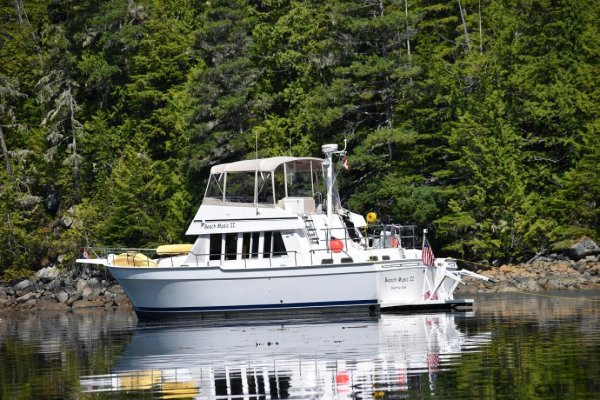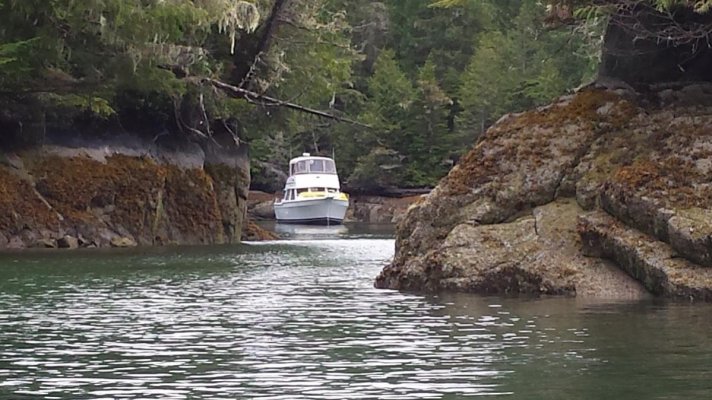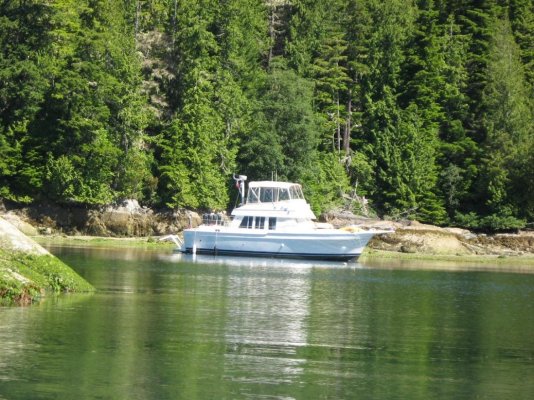I spent the month of June in Desolation Sound last year. I would not say that a stern tie line is absolutely indispensable. Without a stern tie-up, you’ll probably find some place to swing or a dock to tie-up. However, having a stern tie capability vastly increases your possible spots for anchorage and it also makes you a better boating “citizen” if you happen to have your eyes on anchoring in a popular spot where stern ties are the customary protocol.
Last June, we were cruising around Desolation Sound before crowds started to arrive but they did thicken up noticeably over the course of the month. There were many days on our trip in June - for instance in the Octopus Islands and in Laura Cove - where we pulled into an empty or almost-empty anchorage, and it would have been possible for us to swing in the center of the cover. And we were tempted to do that because that’s our preference. But making that choice is a bit anti-social IMHO - if you care about such things. If I get to Laura Cove early on a June day and swing on my anchor, I am having a significant adverse impact on other later arrivals who might choose to use the anchorage in its more customary fashion - with boats observing a stern tie protocol.
There seemed to be a number of approaches to this conundrum in June deployed by various boaters who seemed to fall into three camps in shoulder season: (1) those who would pull into a popular anchorage and stern tie immediately, even if not necessary at the time of arrival, (2) those who would swing, but then move to a stern tie as more arrivals entered the anchorage later in the day, and (3) those who took advantage of their “first in time” priority and occupied the entire anchorage on a hook regardless of the number of boats prevented from enjoying the same anchorage.
Based on my experience in June in Desolation Sound, I would say that the vast majority of boaters fall into groups (1) or (2) above, but not all. We started out in group (2), but moved to group (1) for a couple of reasons. First, as Americans enjoying Canadian waters, it seems like leaving rooms for Canadians (and others) in a spectacular anchorage is a nice move. Second, it’s nice to settle into an anchorage once, and not have to contemplate the prospect of moving to accommodate a later arrival. And, third, it’s not all that difficult once you get your drill down so long as the conditions are not very adverse. (With the occasional unexpected surprise.)
We use 600 feet of floating line. We looked into the various options for rail-mounted reels for that line, and opted to simply store the line flaked into a plastic bin which is stored in our lazzaret. When we need to use the line, the bin gets brought to the cockpit to be deployed. Storage is easy and out of the way, and it was cheap.





